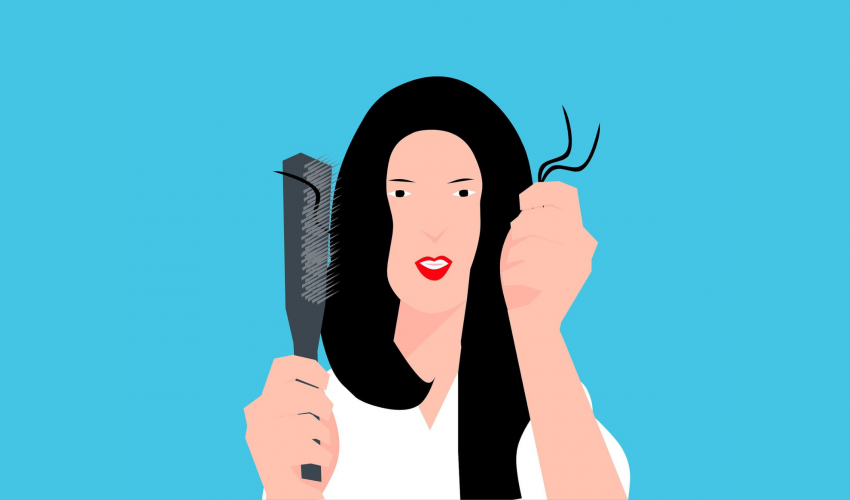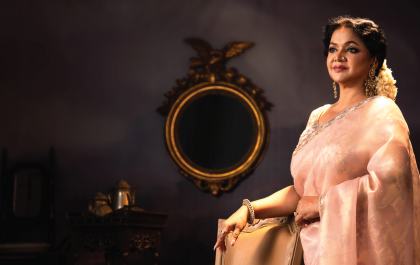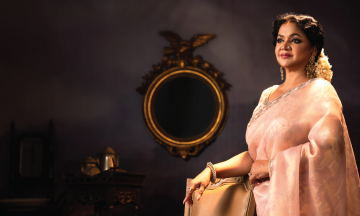By Radhika Agrawal
Hair fall is an emotional trigger, and the conversation around a receding hairline is always a sensitive one. From handpicked products to tactical hairstyles, here are the many weapons you need to fight off — or mask — a receding hairline
Maybe you’ve noticed that your forehead is beginning to look bigger, or perhaps you found stray strands on your white pillowcase, but it has finally sunk in — you’re losing your hair. Hair fall takes you through a series of emotional stages, much like those of grief. You’d find yourself denying that the hair in the shower drain belongs to you, getting angry with your flawed genes, negotiating how bad it really is, and losing all hope and confidence, before finally accepting the undeniable, universal truth: Hair loss is inevitable.
The root cause of hair loss can range from genetics, lifestyle choices, hormonal changes, and well, age. Male pattern baldness or androgenetic alopecia, however, accounts for more than 95 per cent of hair loss in men. Sravya C Tipirneni, consultant dermatologist and cosmetologist at Manipal Hospitals, says that one in five men are affected by this condition. “Men are extremely conscious groomers in this day and age. So naturally, a receding hairline is a big blow to their confidence,” says Dr. Tipirneni.
While a visit to the doctor’s office will help sniff out the reason behind your hair fall, stopping or reversing the process is not as straightforward. It will require time, energy, experimentation, positive spirits, and if all else fails, deep pockets. If you are struggling to find the best route to tackle a receding hairline, consider these expert-approved short-term and long-term solutions.
Be it a bad breakup or a receding hairline, there’s nothing a good haircut can’t help with. Experts suggest going short — really short. Hairstyles such as undercuts and fades help take away some of the attention from your crown by making the disparity less obvious. “Bangs or fringes are also a popular choice for modern men,” says Vipul Chudasama, founder and educator at Vipul Chudasama Academy & Salon. According to him, the key is to choose a hairstyle that complements your face shape, hair density, body proportions, and personality.
Experimenting with your parting is also a clever hack — and no, we’re not talking about a comb-over. Instead of hiding your scalp, you can use your side part to subtly reveal it. By strategically parting your hair where it is thinnest, you can successfully camouflage a problem area.
It can be tricky to choose the right product when countless brands are crowding the shelves, each with a taller claim than the one before it. There are three types of hair fall products you can consider adding to your grooming cabinet: formulas that conceal hair loss, ones that prevent it, and those that promote hair growth or regrowth.
Hairstylists regularly use fiber sprays to fill in thinning areas and balding patches. They typically contain keratin fibers that latch onto the strands, and make your hair look more voluminous.
Shampoos, conditioners, hair oils, and serums that protect against damage and hair fall are rich in ingredients that offer anti-inflammatory and anti-fungal properties. They ensure that your follicles are not being clogged while strengthening your strands, thereby delaying hair fall.
While no conclusive research has proven that it is possible to naturally regrow hair, there are products that work on revitalising the roots and creating a healthy environment for your hair to flourish. A few ingredients, like caffeine, have begun to garner special attention. “According to research published in the International Journal of Dermatology, caffeine is shown to stimulate the growth of hair follicles,” says Mr. Tarun Sharma, co-founder & CEO, mCaffeine.
Ayurvedic formulas have also remained a popular choice among men and women with thinning hair. The alternative medicine system attributes hair fall to an imbalance in the doshas. “People with excess pitta and vata are more prone to premature thinning, graying and hair loss. The rasayanas in ayurvedic herbs like amla, bhringraj rosemary, hibiscus, neem, etc. have the power to reverse the damage by balancing your doshas,” explains Dr. Aruna Purohit, ayurveda expert at Kama Ayurveda.
Going in for a medical or surgical procedure to regrow hair is seen as the last resort for many reasons: it’s time consuming, expensive, and quite frankly, terrifying. Nobody is thrilled by the idea of needles going into their scalp. But not all medical treatments for hair growth are invasive. Minoxidil, a common drug prescribed for hair loss, is available both as an oral tablet and a liquid solution. Depending on the severity of your condition, your doctor may pair minoxidil with surgical treatments such as the Growth Factor Concentrate (GFC) procedure and LED therapy. You may begin to see results in as soon as a month’s time.
The bottom line? Combatting hair fall can be a long and frustrating process. The choice between fighting the battle or embracing the changes is entirely up to you. But whatever you do, remember to admire your reflection in the mirror, with or without a head full of hair.
Photo: mohamed Hassan from Pixabay
Reproduced with permission from Mansworldindia.com













